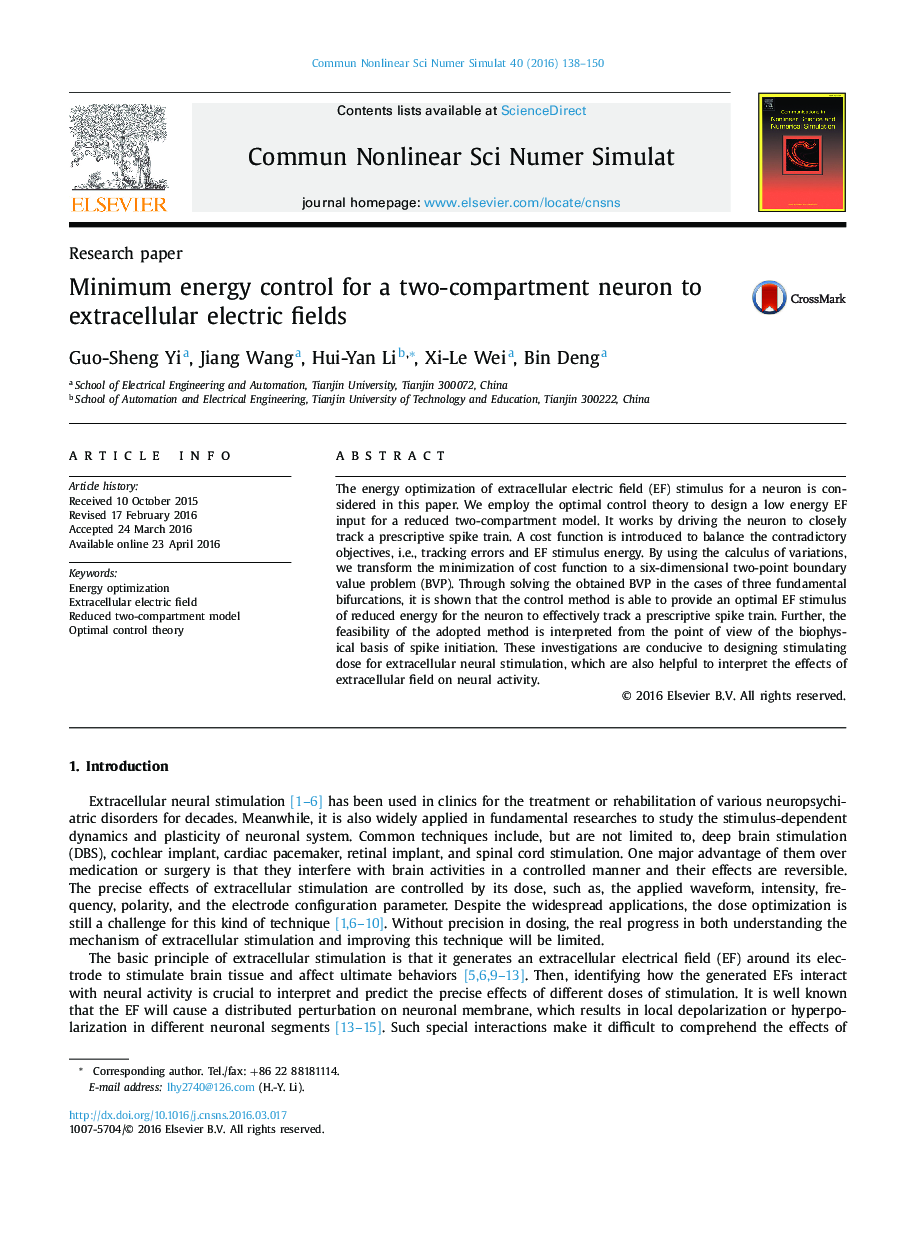| Article ID | Journal | Published Year | Pages | File Type |
|---|---|---|---|---|
| 758077 | Communications in Nonlinear Science and Numerical Simulation | 2016 | 13 Pages |
•Energy optimization of extracellular electric field (EF) stimulus for a two-compartment neuron is studied.•A cost function that balances tracking error and EF energy is introduced.•Minimization of cost function is solved by using the calculus of variations.•The effects of optimal control are examined in the case of three types of bifurcation.•Biophysical interpretations of the simulations are presented.
The energy optimization of extracellular electric field (EF) stimulus for a neuron is considered in this paper. We employ the optimal control theory to design a low energy EF input for a reduced two-compartment model. It works by driving the neuron to closely track a prescriptive spike train. A cost function is introduced to balance the contradictory objectives, i.e., tracking errors and EF stimulus energy. By using the calculus of variations, we transform the minimization of cost function to a six-dimensional two-point boundary value problem (BVP). Through solving the obtained BVP in the cases of three fundamental bifurcations, it is shown that the control method is able to provide an optimal EF stimulus of reduced energy for the neuron to effectively track a prescriptive spike train. Further, the feasibility of the adopted method is interpreted from the point of view of the biophysical basis of spike initiation. These investigations are conducive to designing stimulating dose for extracellular neural stimulation, which are also helpful to interpret the effects of extracellular field on neural activity.
